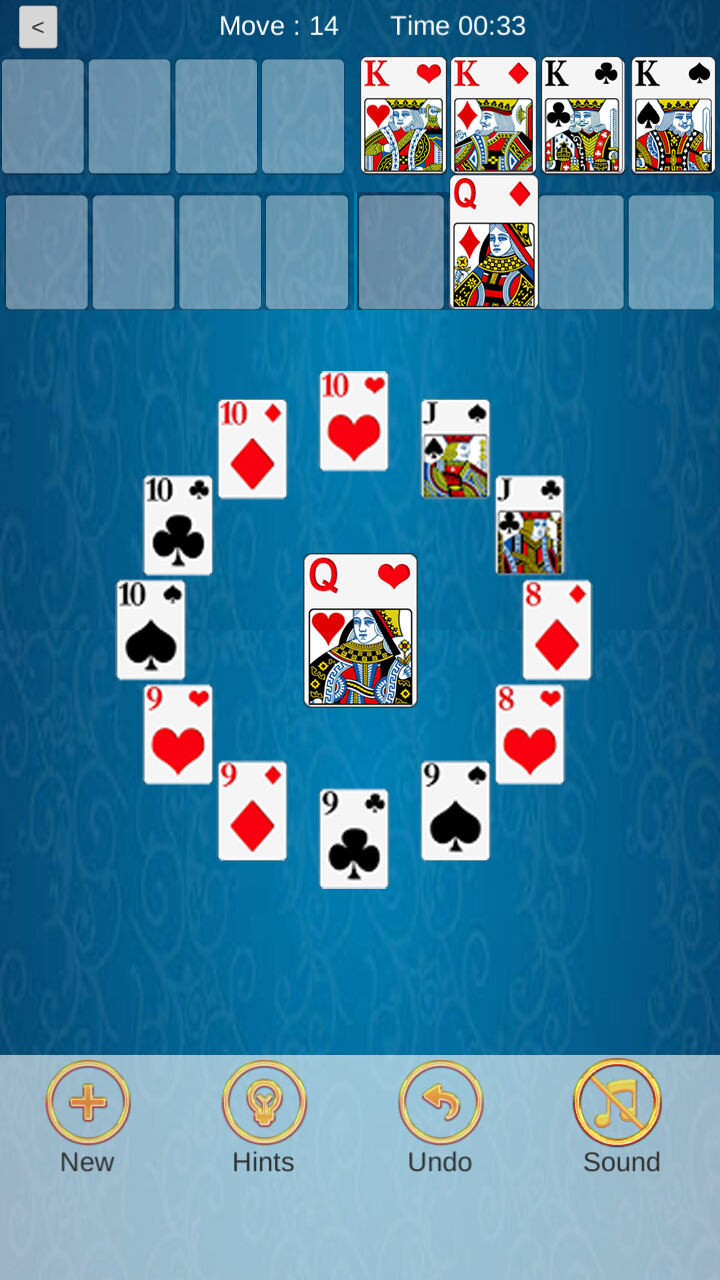

There are 4 foundation piles (initially empty), one for each suit of Ace. On the tableau, cards are arranged in descending order (meaning King, Queen, Jack, 10, etc) in alternating color (e.g. In Classic Solitaire, there are 2 main sets of rules: So now that everything is laid out on the game board appropriately, you can begin playing. Most games give you an unlimited number of redeals which is the default in this game, though you can configure the number of redeals in the game preferences. Also, in some versions of classic/klondike, the number of times you can go through the stock pile is limited. On the Classic Solitaire site, you can choose to deal 1 card at a time or 3, whatever you want. However, many (and possibly even most) online solitaire games let you deal 1 card at a time, making the game friendlier and easier to win. The traditional rules of classic solitaire generally have you deal 3 cards at a time from the stock, where only the top most card is playable at any given time. These cards will be used for the stock pile. If you are playing by hand, after you have placed the appropriate number of cards on the tableau piles, you will have cards left over. Of course, if you’re playing on the Classic Solitaire site, all of this is taken care of for you automatically when you start a new game. You repeat this process until you’ve placed your last face up card on the 7th tableau stack. On the next go round, you place a face-up card on tableau stack #2, then 5 more face down cards on the remaining stacks. For the tableau, begin by dealing the first card up then place 6 more cards face down (for a grand total of 7 stacks on the main playing area (the tableau)). If you are playing by hand, you start by shuffling your deck of cards fully, then start building the tableau. Initially, the foundation piles and the discard pile will be empty. the discard pile (also known as the talon).Though you might not have heard these terms before, a game of classic is composed of the following items: The layout of the card game table is fairly straightforward. Classic Solitaire OverviewĬlassic Solitaire (known only as simply “Solitaire” by some, and “Klondike Solitaire” by others) is a crazy popular card game that is won by moving all cards in a single deck from the tableau to the foundation piles. Or try Hurricane Solitaire where you can keep tabs on all hurricanes, cyclones, and typhoons. The object of the game is to turn over pairs of matching cards.Try our new game Earthquake Solitaire where you can view live earthquakes while you play cards. Concentration also known as Memory, Pelmanism, Shinkei-suijaku, Pexeso or simply Pairs, is a card game in which all of the cards are laid face down on a surface and two cards are flipped face up over each turn.It is more of a puzzle than a game, since it is repeatable once it is solved. Peg solitaire is a board game where the goal is to empty the board of pegs through movement and capturing.It is more commonly played on a computer, than as a physical tabletop game. Mahjong solitaire is a single-player matching game that uses a set of mahjong tiles rather than playing cards.Other popular variations include Spider, Yukon, and FreeCell. The most common solitaire card game is Klondike. Patience or card solitaire, also known as "solitaire with cards", generally involves placing cards in a layout, and sorting them according to specific rules.
Play free solitaire windows#
The most popular card solitaire is Klondike, which was called Microsoft Solitaire in a digital implementation included with the Windows operating system from 1990 onwards.
Play free solitaire series#
In the United States, the first card solitaire book, Patience: A series of thirty games with cards, was published by Ednah Cheney in 1870. There are additional references to Patience in French literature. Books were also reported to appear in Sweden and Russia in the early 1800s. The term Patiencespiel appears in Das neue Königliche L’Hombre-Spiel, a German book published in 1788. The origins of Card Solitaire or Patience are unclear, but the earliest records appear in the late 1700s across northern Europe and Scandinavia.


 0 kommentar(er)
0 kommentar(er)
